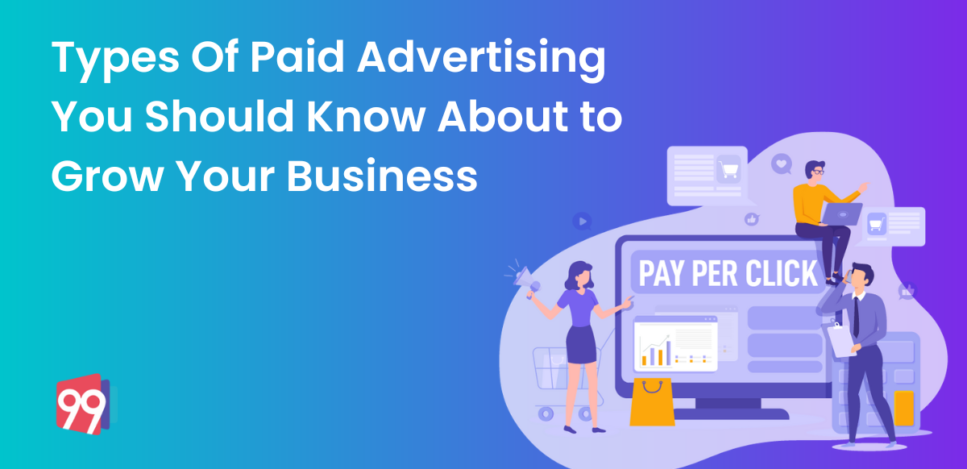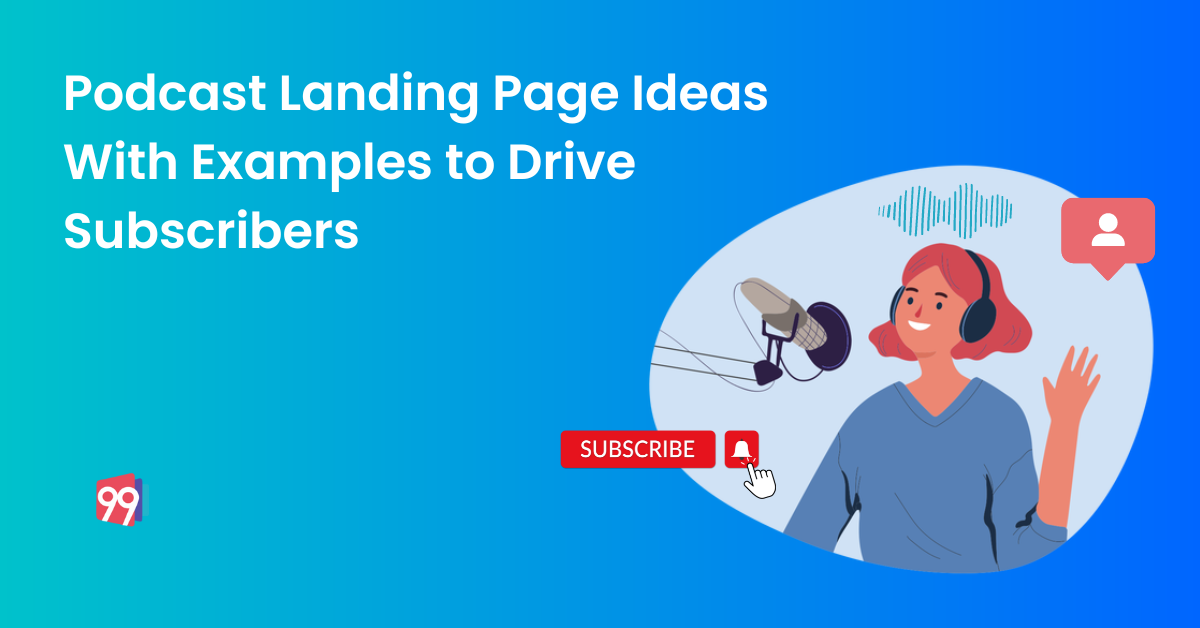The concept of utilizing various types of paid advertising arises when any marketer contemplates expanding a brand and attracting more traffic to a specific website or landing page.
Paid advertising is a traditional marketing method that has evolved dynamically to meet the needs of businesses. In the past, paid advertising was mostly limited to newspapers, billboards, banners, and other physical media.
Today, it has shifted to the online world, where companies can promote themselves 24/7.
Paid advertising in a digital form offers marketers new avenues to engage with their target audience and promote their brand creatively. Research suggests that paid ads yield a return on investment of 200% and boost brand awareness by 80%. If you are a marketer who is still undecided about whether to utilize paid advertising, this blog is for you.
Investing in online ads can be highly beneficial for any business, but it is also a fiercely competitive market. Without proper knowledge of the right platforms to target and the different types of paid advertising available, a company can easily get lost among other advertisements. In this blog, we will delve into the world of paid advertising, outlining its various types and how to identify which one is best suited for your needs.
What is Paid Advertising in the Online World?
Paid advertisements reach out to the target audience in search results and other platforms when they search for a particular keyword that matches a company’s services. Such advertisements redirect the interested prospects to the advertiser’s main site or landing page.
The reason why paid adverts are a hit among the brands is that it helps in reaching out to a specific segment of consumers that a company wants to target instead of showcasing ads to a broad audience which increases the chance of false leads and misguided visitors. By understanding prospects’ search history, the advertising platforms effectively showcase the right ads to the right audience.
Other benefits of paid advertisements are:
- Influence purchasing decisions
- Delivers personalised content to the right people
- Easy to track and analyse
- Allows retargeting
Different audiences’ demographics are present across various online channels; it becomes crucial for marketers to understand all the types of paid advertising before investing.
Different Types of Paid Advertising
Most paid advertising platforms work on the pay-per-click (PPC) model. Instead of paying a standard fee for showcasing the ads in PPC adverts, businesses are charged based on how many people clicked on the ad and went to the brand’s website. It increases the efficiency of the whole advertisements process and makes it easier for all types of businesses, whether big or small, to participate.
PPC ads get further classified into different types:
1. Display ads
isplay ads are something that every internet user must be familiar with. These adverts appear at a website’s bottom, top, or corners. Such types of paid advertising contain imagery or short clips to attract consumer attention and motivate them to click.
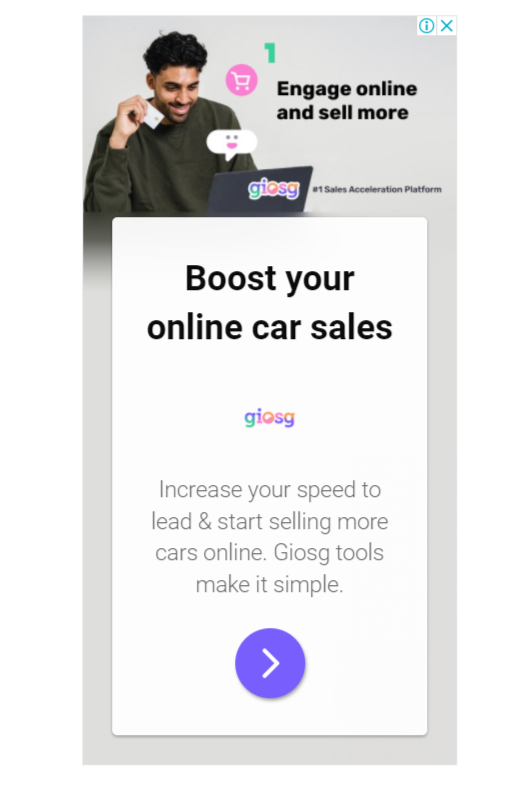
Display ads have been a part of the online advertising industry for a long time, leading to their saturation. People have become so accounted for seeing these ads that they now habitually ignore them. But that doesn’t mean that such ads can’t get utilised.
While display ads might generate fewer clicks, they are a sure-shot way of generating brand awareness. You need to invest, analyse, and optimise your display ads to generate better impressions and clicks.
Display ads can only become live once approved by Google. For the set-up process, don’t forget to check out the image ad requirements.
2. Social media ads
Social media platforms like Facebook, LinkedIn, YouTube, Instagram, etc., also allow paid advertisements. As it is hard for a business to reach out to its audience promptly on social media channels, these types Of paid advertising help make such brands more visible in the local search results.
Social media sites tend to have more personal information about a particular user, so it is easier to display hyper-personalized ads on social sites.
However, a company must always keep in mind that the audience on each social media differs and should be more careful while selecting the channel they want to focus on. The format and style of the way an advertisement gets displayed differ from site to site and must be checked by the marketer for suitability.
Here are some social media ads examples:
Facebook:
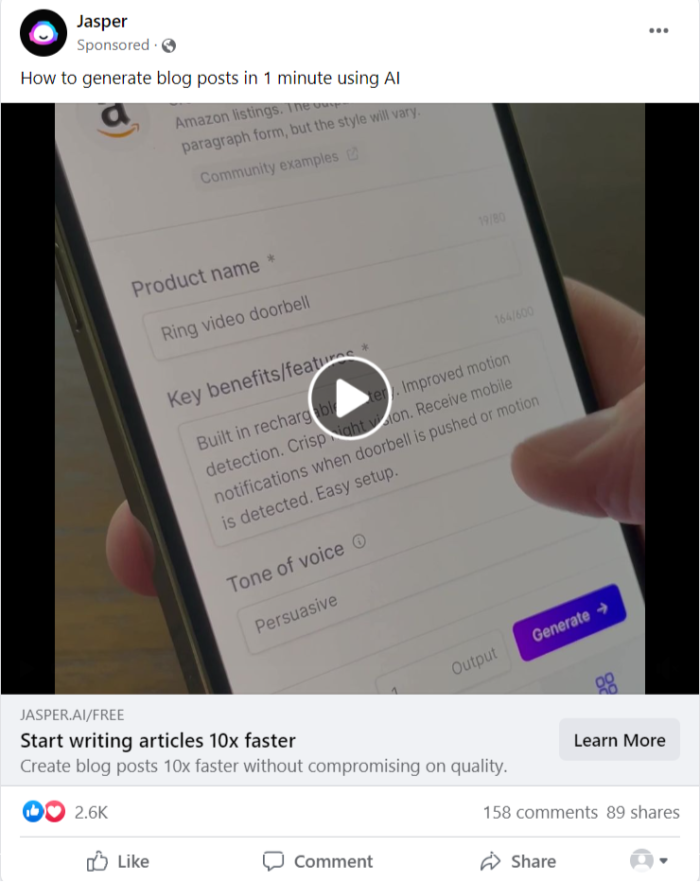
Youtube:

3. Search ads
Search ads are paid on search engines such as Google, Bing, Yahoo, and others. These types of paid advertising are typically text-based and are displayed when a user searches for information that matches the products or services of a company.
To ensure transparency in its search results, Google usually labels such paid content as “Sponsored or as Ad.”
To set up search ads, choose relevant keywords and create quality ads. Long-tail keywords help target high-intent audiences at a lower cost. Bid for ad placement and pay-per-click.
For example, when we search the phrase “furniture in the UK”, we see search ads at the top of the results.
Businesses redirect search ads to either the brand’s website or a landing page where they get more information about the company, its services, benefits, features, etc.
Such pages motivate visitors to convert into leads and increase brand awareness. Marketers advise always keep the ads optimised for all types of screens, be it mobile or desktop.
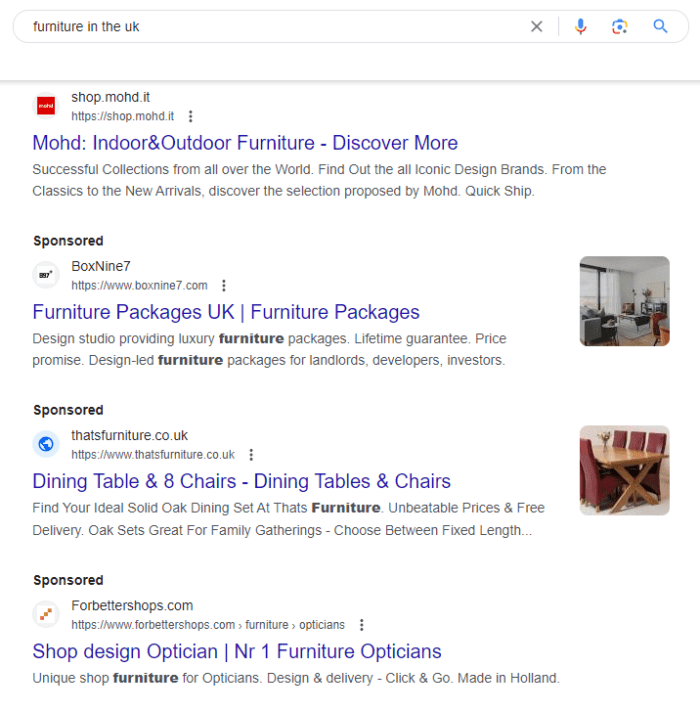
4. Email Sponsored Ads
A unique form of paid advertising is the email sponsored ad, which appears in users’ inboxes resembling regular emails but is actually targeted ads based on user behavior. This approach bypasses the need for an existing email list.
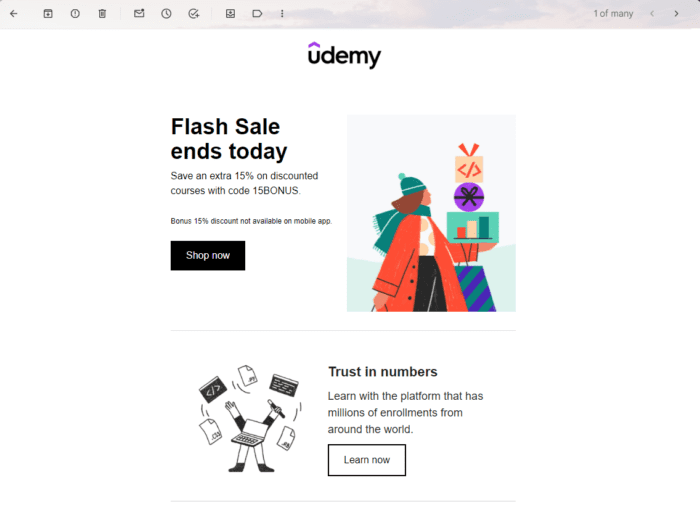
5. Google Shopping Ads
Appearing during searches for product-specific terms, Google shopping ads present with images, pricing, and reviews, targeting users with intent to buy. Depending on how you structure your product pages, these ads can sometimes be free or paid per click.

Widely-Used Paid Ad Platforms Explained
The type of paid advertising you choose can dramatically influence the outcome of your campaigns. With many platforms at your disposal, each with distinct targeting features and ad formats, pinpointing the ideal one for your goals is key.
Let’s skim through the most commonly utilized paid advertising platforms today.
1. Google Ads
Google Ads reigns supreme in the type of paid advertising domain, offering extensive reach and meticulous targeting. It allows for a variety of types of paid advertising, including search ads, Google Shopping ads, and mobile app ads. Google’s comprehensive tools and targeting abilities make it a flexible option for any paid marketing plan.
2. YouTube Ads
YouTube Ads present an opportunity to engage with an extensive viewership. To utilize this type of paid advertising, you’ll need a business account to create ads ranging from bumper ads to in-stream ads. YouTube’s various ad choices serve various marketing intentions and audiences.
3. Facebook Ads (Meta for Business)
Facebook Ads provides access to a daily stream of users, offering a wide array of ad styles from boosted posts to dynamic ads. This platform’s type of paid advertising is known for its detailed targeting, extending its influence to Instagram and broadening your campaign’s scope.
4. LinkedIn Ads
LinkedIn Ads is the go-to for a professional demographic, ideal for B2B entities and businesses targeting corporate users. With various types of paid advertising like text ads and sponsored content, LinkedIn ensures your ads engage the right professional segments.
5. Instagram Ads
The type of paid advertising on Instagram’s visually-driven platform is diverse, from shoppable posts to engaging reels. This platform’s ads not only enhance brand visibility but also facilitate direct in-app purchases, making it a versatile tool for marketers.
6. Twitter Ads
If your target demographic is the 25-34 age bracket, Twitter Ads could be the perfect match. This type of paid advertising is adaptable, offering everything from promoted tweets to interactive ads that engage users and encourage interaction.
7. Pinterest Ads
For the creative and service sectors, Pinterest Ads offers a visually attractive type of paid advertising that harmonizes with organic content, spurring actions such as app installs and enhancing brand awareness.
8. TikTok for Business
TikTok’s youthful vibe belies its wide appeal, offering unique ad formats that feel genuine and resonate deeply with users. This platform is at the forefront of inventive types of paid advertising with branded hashtags and in-feed ads.
9. Bing Ads (Microsoft Advertising)
Bing Ads offers a solid alternative to Google with Microsoft’s search engine. It provides a variety of types of paid advertising, including responsive search ads, to effectively target desired audiences, often at a competitive price point.
10. Amazon Advertising
For e-commerce, Amazon Advertising is crucial. The type of paid advertising on Amazon, which surfaces in search results for product searches, is designed to achieve a higher ROI with a suite of ad options, from audio to video, catering to ready-to-purchase users.
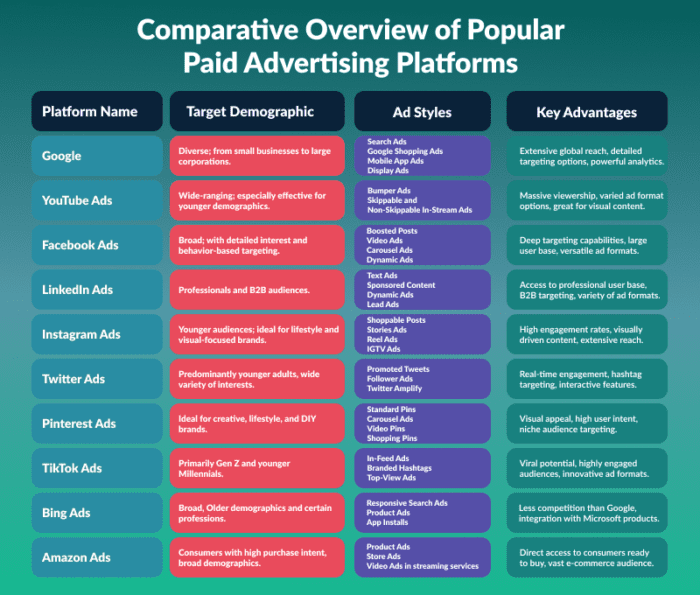
How to Choose the Right Type of Paid Advertising for Your Business
Different types of paid advertising are available over many platforms, and it can be hard to decide which one to pick to generate better results. So, for a business that wants to start paid adverts, the first thing to do is analyse their buyers’ personas and current market requirements.
All advertisements depend heavily on keywords and how advertisements showcase a brand. It is essential to figure out what works for the company’s adverts and what doesn’t.
You can consider the majority demographic of your lead list, location for local paid ads, online behaviour, etc.
You can always start from scratch and, through testing and changing, can become better at paid advertising.
Conclusion
By understanding the different types of paid advertising and when to use them, you can grow your business through effective marketing strategies. Increasing a brand’s reach is an essential job that paid advertisements effortlessly conduct.
Search engine ads, display ads, and social media ads have different benefits and drawbacks that businesses should consider before deciding.
Related Blogs:
How to Utilize SEO for Lead Generation
How To Use Psychology of Colours In Marketing Campaigns
Boost Your Firm’s Growth with Smart Accounting Ads Strategy
Our Featured Templates
Accounting Landing Page Template


